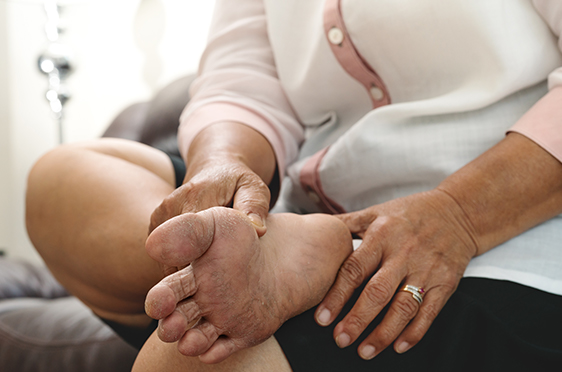The Stages of Rheumatoid Arthritis
According to the Arthritis Foundation, 1 in 4 adults in the United States suffer from some form of doctor-diagnosed arthritis. And one of the most devastating forms of the disease is rheumatoid arthritis (RA).
Unfortunately, there is no cure for this disease but there are treatments available to reduce inflammation and pain, improve the function of your joints, and prevent further damage. Like many diseases, the earlier you treat RA, the easier it is to treat the symptoms. Learn about the states of RA and what can be done to treat it.
What is Rheumatoid Arthritis?
Rheumatoid arthritis is an autoimmune disease where the immune system attacks the joints, causing inflammation. That inflammation will cause the tissue lining the inside of your joints to thicken, resulting in swelling and pain around the joints. If the inflammation continues, it can damage the cartilage that keeps the joint moving smoothly.
RA commonly affects the joints in your hands, wrists, elbow, knees, and especially your feet and ankles. Since it is an autoimmune disease, it can also affect other systems in your body such as your heart and lungs. This is why the sooner the disease is treated, the easier it can be to prevent any progression of the disease.
The Symptoms of RA
As the disease begins to progress, each stage presents a different set of symptoms:
Stage 1: The Tissue is Attacked
The early stage of RA begins as the body begins to attack the joint tissue, beginning with the small joints such as your feet. This will cause inflammation inside the joint and the tissue will begin to swell. During this stage, the bones will not be affected; however, the joint lining (synovium) will become inflamed.
Symptoms during this stage include joint pain, swelling, and stiffness.
Stage 2: The Cartilage Begins to Erode
In the moderate stage of RA, the synovium’s inflammation will begin to damage the joint cartilage that covers the ends of the bones. The loss of cartilage will reduce the size of the space between the bones, causing the joints to become loose.
Symptoms during this stage include pain, a loss of mobility in the joint, and a limited range of motion.
Stage 3: Damage to the Bone
In the severe stage of RA, the cartilage will have worn away, removing the cushion between the joint bones. The bones will begin to rub together (commonly known as “bone on bone”) and causing damage and some deformity to the bones.
Symptoms include pain, swelling, possible muscle weakness, and more mobility problems.
Stage 4: The Joints Stop Working
In the final stage of RA, the inflammation will have disappeared in the joint; however, at this time the joints have stopped functioning. The bones may be fused together (ankylosis) with the destruction of the joints.
Symptoms include pain, swelling, stiffness, loss of mobility, and a possible reduction in muscle strength.
Treatment for RA
- Depending on which stage of RA you are currently experiencing, the severity of the symptoms, and how long you’ve had the disease, the treatment plan could include the following:
- Medication to suppress your body’s immune and inflammatory responses to slow the progression of the disease
- Drugs that can change the body’s inflammatory response
- Steroids to reduce inflammation
- Surgery to improve your mobility, repair any damage to the joints, and reduce pain
It is also recommended that you keep a healthy lifestyle to manage your RA.
How NEPA Podiatry Can Help
If you are suffering from rheumatoid arthritis in your ankles, feet, or toes, Dr. John Scheland is ready to help. Contact our offices today to learn more about your options and to schedule an appointment today.

